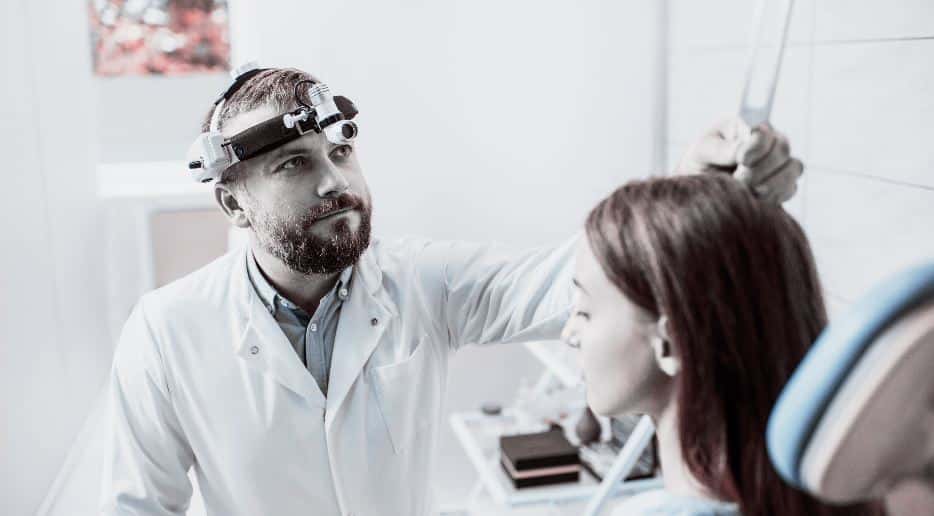Note: This blog is a continuation that explores the early history of the discipline that we now call audiology. This blog continues the historical development, and identifies the significance of discovering the phenomenon of bone conduction hearing and its preliminary utilization as a tool in the differential diagnosis of hearing disorders.
Much of this information comes directly from an English translation of the referenced work in 1970 in Translations of the Beltone Institute for Hearing Research.
Bone Conduction Hearing – Some History
Bone conduction has had a history of ebbs and flows, and there appears to be a continuation of this vacillation even today.
It seems that the phenomenon of bone conduction was first recognized during the period of anatomical studies by Vesalius (1515-1564), Fallopius (1523-1562), and Eustachius (died 1574) and early experimental physiological studies. And, because of its significance in the development of hearing as a science, these developments might easily be considered the birth of the functional diagnosis of hearing disorders.
Who First Described Bone Conduction?
Girolamo Cardano, a physician, mathematician, and philosopher, was among the first to describe bone conduction in his book “De Subtilitate” in 1550. He proposed a method by which sound could be transmitted to the ear by holding a rod or spear shaft between the teeth. Although there is some debate about the true origin of this discovery, Cardano’s work laid the foundation for further exploration of bone conduction.
During the same period, other prominent figures such as Vesalius, Fallopius, and Eustachius recognized the significance of bone conduction in anatomical and physiological studies. However, the concept was primarily discussed in a theoretical context, focusing on its implications for auditory function rather than its diagnostic potential.
Bone Conduction in Differential Diagnosis
It was Hieronymus Capivacci (died 1589) who first realized the significance of Cardano’s bone-conduction experiment. (He may have discovered it independently of Cardano’s work). His focus, although the same concept as that described by Cardano, was slightly more sophisticated. He connected the teeth of his patients with the strings of a zither by means of an iron rod about 2 feet in length. If the patient heard sounds produced by the instrument, Capivacci diagnosed this as a disorder of the tympanic membrane. If the patient heard nothing, he concluded that there was a lesion of the auditory nerve – that it had been abolished.
And, although the differential diagnosis was not complete, nor exact, in a theoretical sense, Capivacci may have been the first to differentiate conductive and sensorineural hearing disorders.
The irony of the discovery by Cardano is that even though his experiment was frequently repeated during the following years, reference to its potential diagnostic implication was rarely, if ever made. Emphasis was placed primarily on its theoretical significance to auditory function.
For example, Koyter (1534-1600), a pupil of Fallopius proposed that the sound transmission in this experiment was most likely transmitted through the Eustachian tubes. It wasn’t until Guichard Joseph Duverney (1648-1730) explained that Cardano’s test transmission occurred by the bones of the skull and not through the Eustachian tubes that the true pathway was described. He found that what is described as bone conduction could only be demonstrated when the vibrating object was brought in direct contact with the teeth and not when merely placed into the oral cavity without touching any of its walls. Still, Duverney did not employ the test for diagnostic purposes because he was primarily interested in physiological problems. (He has also been identified as giving the first description of objective tinnitus).
Günther Christoph Schelhammer (1649-1712) conducted experiments similar to, and during the same time, as Duverney. He tried to prove that the Eustachian tubes served as aeration to and drainage from the middle ear, and not as a transmission sound pathway. To do this he used conventional musical instruments brought into contact with the subject by means of a rod. He also used a vibrating table fork in contact with the teeth, soft tissues of the mouth, or the bones of the skull. He seems to have been perhaps the first person to recognize the excellent vibratory properties of forks and used them often. He recognized the diagnostic significance of his tests and came to the same conclusions as did Capivacci.
Capivacci may have independently discovered the diagnostic significance of Cardano’s bone-conduction experiment, while Duverney and Schelhammer further explored the true pathway and diagnostic potential of bone conduction using direct contact with vibrating objects and musical instruments.
A definite advance related to bone conduction was the development of the tuning fork in 1711 by John Shore, a trumpeter and lute player to the English king. However, his use was for musical purposes and not for auditory testing and/or diagnosis.
Again, Another Dry Spell
One might have thought that with the advent of the tuning fork and basic theoretical concept knowledge related to bone conduction known, that the use of bone conduction tests for diagnostic purposes would have flourished. Again, even though knowledge of bone conduction had been around for 150 years, it had to wait to be re-discovered and gradually accepted only during the 19th century.
Benefits to the Hearing Impaired
Although bone conduction was not used diagnostically, Cardano’s discovery started to have benefits for the hearing impaired. Cabei (1646) and Bulwer (1648) were the first to try using it for teaching deaf-mutes. A similar instrument developed was the rod of Itard (1821). The intent was to place this rod between the teeth of the speaker and the teeth of the hearing-impaired listener, with each holding on to one end of the rod. The rod of Itard used a spring to maintain constant contact with the teeth.
It was these early experiments into bone conduction that eventually led to both the testing of hearing for differential diagnosis and also to the development of electro-acoustic bone-conduction hearing aids.
Reference:
- Feldmann, H. A history of audiology: a comprehensive report and bibliography from the earliest beginnings to the present. Translations of the Beltone Institute for Hearing Research. No. 22, January, 1970, 111 pages.







